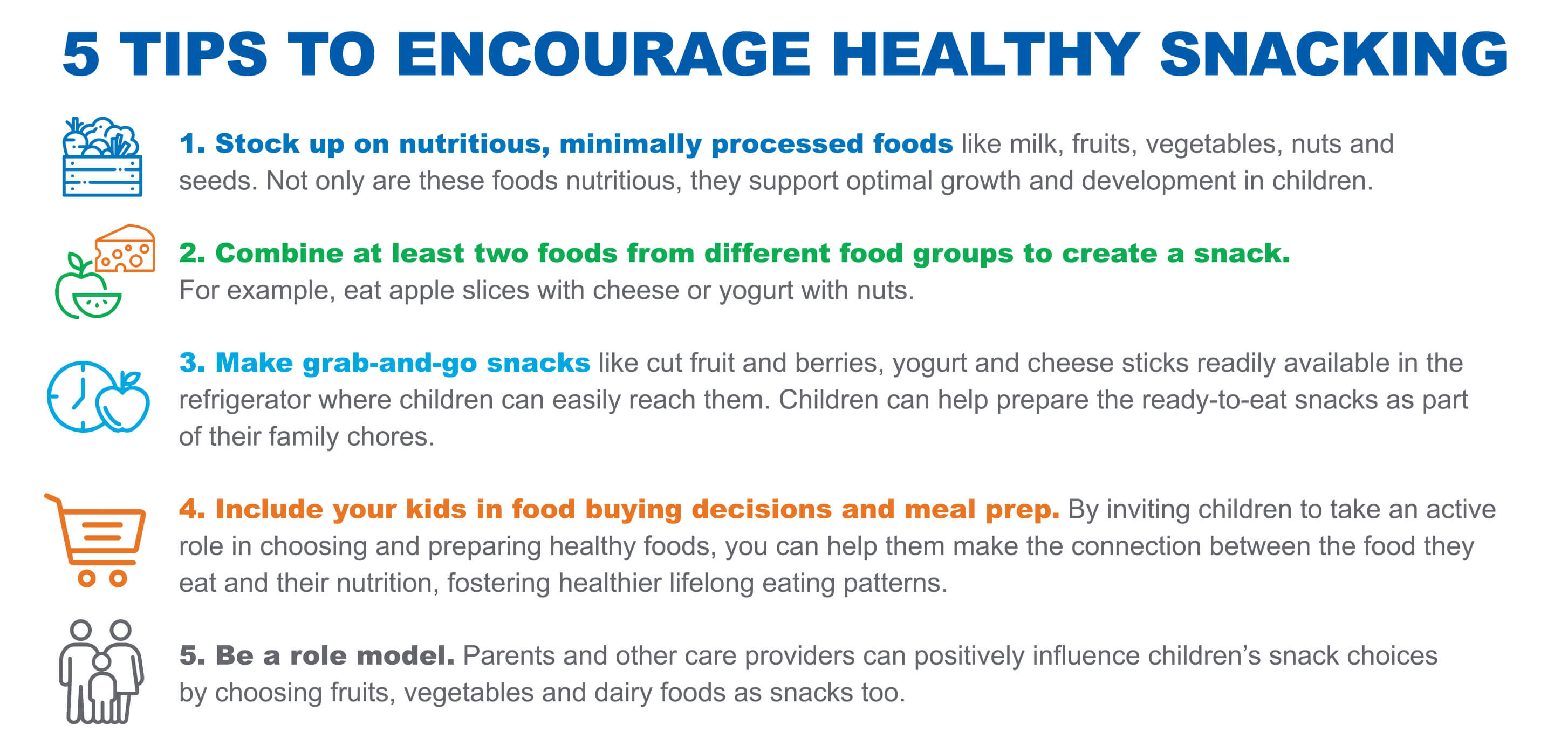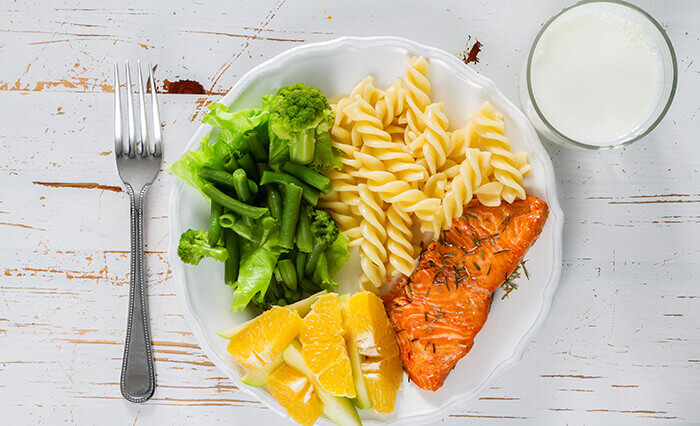By: Megan Holdaway, RDN

Many Americans snack throughout the day instead of eating only at traditional mealtimes, a trend that increased during the pandemic. Survey results show that 1 in 4 adults report snacking throughout the day and another 1 in 3 adults report to snacking at least once a day. Increased snacking habits are not limited to just adults either. Children also increased their snacking behavior, with research showing an alarming 27% of daily calories consumed in the form of snacks.
All snacks are not created equal, and research shows that the bulk of calories that people eat come from sweets and desserts, followed by salty treats. Created to be hyperpalatable, or extremely tasty, these types of snacks make it easy to overindulge and add to overall caloric intake while providing little nutrition. Unfortunately, many Americans have nutrient gaps, which simply means the foods they eat don’t give them enough of one or more of the nutrients needed for good health, including fiber, potassium, vitamin D and calcium, which may have a negative impact on health. Experts recommend shifting snack choices to more wholesome, nutrient-rich foods like milk and dairy, fruits, vegetables, whole grains and lean proteins that can positively contribute to overall nutritional intake and close existing nutrient gaps.
Snack Choices Matter
Snacking can be a healthy and helpful way to get vital nutrients when the snack foods selected are nutritious and wholesome. In fact, within a healthy eating pattern, snacking can play a key role in overall health, supporting healthier weight in adolescents and improving diet quality in adults.
Snacks that are minimally processed can help fill nutrient gaps and improve overall diet quality, and includes a wide variety of foods such as milk, cheese, yogurt, fruit, vegetables, nuts, seeds and whole grains. Pairing multiple wholesome foods together—such as apple slices and string cheese or yogurt topped with granola—can create a tasty, nutritious treat that satisfies while also providing health benefits thanks to food synergy. While convenient and enjoyable, highly processed snacks—which include many pre-packaged chips, cookies and desserts—contribute calories without providing valuable nutrition, which is why they are discouraged by health experts.
To make nutrition easier to follow, the U.S. Dietary Guidelines recommend most Americans consume the following daily intakes to ensure they are getting the nutrition they need for optimal health:
There are simple and healthy snacking tips children and adults alike can take to help improve snacking habits. These small steps taken over time create impactful improvements that can contribute to increased nutrition, support optimal growth and development in children, improved body weight management, and reduced risk of poor health outcomes.

Make Healthy Snacking a Habit
People, and especially children, love to snack, making it the perfect eating occasion to increase nutritional intake and improve overall eating patterns. By choosing wholesome, minimally processed foods and making them the foundation of daily food choices, people can meet daily nutritional needs and enjoy additional health benefits.
Nutrition experts agree that focusing on overall diet quality is more important for health than emphasizing specific amounts of single nutrients. Because there is no single food that can drastically improve health, improving daily eating habits to build healthy eating patterns will go a long way in improving overall health and health outcomes. While nutrients matter, foods are more than just their individual nutrients, and eating a variety of nutrient-dense foods have been shown to provide even more benefits because they are part of an overall healthy eating pattern. Some of these benefits may include the treatment and prevention of illness and chronic disease. For instance, dairy foods—particularly cheese, yogurt and kefir—provide a matrix of nutrients, including probiotics, which can improve gut health and supply immune boosting properties.
Making small, healthy changes to snack choices over time can go a long way in improving a person’s diet quality and overall health. Find free, science-based nutrition resources developed by nutrition and education experts to help educators and families teach how to make healthy eating choices at HealthyEating.org.

Megan Holdaway, RDN
Megan Holdaway, RDN
Megan Holdaway is a registered dietitian nutritionist and the Nutrition Science Program Manager at Dairy Council of California.
Mealtime is not the only time to make healthy choices. Snacking is another opportunity by choosing minimally processed foods with valuable nutrients.

Being mindful of portion sizes without being overly preoccupied can help guide eating choices.

Subscribe to our blog to stay up to date on the latest news, products, and more.